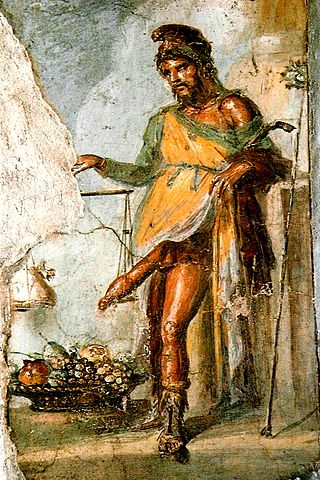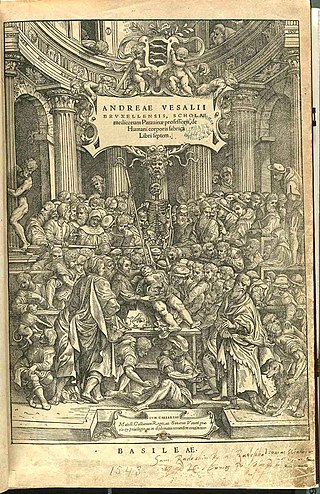Related Research Articles
Ataxia is a neurological sign consisting of lack of voluntary coordination of muscle movements that can include gait abnormality, speech changes, and abnormalities in eye movements, that indicates dysfunction of parts of the nervous system that coordinate movement, such as the cerebellum.
Erectile dysfunction (ED), also referred to as impotence, is a form of sexual dysfunction in males characterized by the persistent or recurring inability to achieve or maintain a penile erection with sufficient rigidity and duration for satisfactory sexual activity. It is the most common sexual problem in males and can cause psychological distress due to its impact on self-image and sexual relationships.

Priapism is a condition in which a penis remains erect for hours in the absence of stimulation or after stimulation has ended. There are three types: ischemic (low-flow), nonischemic (high-flow), and recurrent ischemic (intermittent). Most cases are ischemic. Ischemic priapism is generally painful while nonischemic priapism is not. In ischemic priapism, most of the penis is hard; however, the glans penis is not. In nonischemic priapism, the entire penis is only somewhat hard. Very rarely, clitoral priapism occurs in women.

Spina bifida /ˌspaɪnə ˈbɪfɪdə/ is a birth defect in which there is incomplete closing of the spine and the membranes around the spinal cord during early development in pregnancy. There are three main types: spina bifida occulta, meningocele and myelomeningocele. Meningocele and myelomeningocele may be grouped as spina bifida cystica. The most common location is the lower back, but in rare cases it may be in the middle back or neck.
Sexual dysfunction is difficulty experienced by an individual or partners during any stage of normal sexual activity, including physical pleasure, desire, preference, arousal, or orgasm. The World Health Organization defines sexual dysfunction as a "person's inability to participate in a sexual relationship as they would wish". This definition is broad and is subject to many interpretations. A diagnosis of sexual dysfunction under the DSM-5 requires a person to feel extreme distress and interpersonal strain for a minimum of six months. Sexual dysfunction can have a profound impact on an individual's perceived quality of sexual life. The term sexual disorder may not only refer to physical sexual dysfunction, but to paraphilias as well; this is sometimes termed disorder of sexual preference.

A spinal cord injury (SCI) is damage to the spinal cord that causes temporary or permanent changes in its function. Symptoms may include loss of muscle function, sensation, or autonomic function in the parts of the body served by the spinal cord below the level of the injury. Injury can occur at any level of the spinal cord and can be complete, with a total loss of sensation and muscle function at lower sacral segments, or incomplete, meaning some nervous signals are able to travel past the injured area of the cord up to the Sacral S4-5 spinal cord segments. Depending on the location and severity of damage, the symptoms vary, from numbness to paralysis, including bowel or bladder incontinence. Long term outcomes also range widely, from full recovery to permanent tetraplegia or paraplegia. Complications can include muscle atrophy, loss of voluntary motor control, spasticity, pressure sores, infections, and breathing problems.

Rodolfo Llinás Riascos is a Colombian and American neuroscientist. He is currently the Thomas and Suzanne Murphy Professor of Neuroscience and Chairman Emeritus of the Department of Physiology & Neuroscience at the NYU School of Medicine. Llinás has published over 800 scientific articles.

Semen collection refers to the process of obtaining semen from human males or other animals with the use of various methods, for the purposes of artificial insemination, or medical study. Semen can be collected via masturbation, prostate massage, artificial vagina, penile vibratory stimulation (vibroejaculation) and electroejaculation. Semen can be collected from endangered species for cryopreservation of genetic resources.

Cyclic guanosine monophosphate-specific phosphodiesterase type 5 is an enzyme from the phosphodiesterase class. It is found in various tissues, most prominently the corpus cavernosum and the retina. It has also been recently discovered to play a vital role in the cardiovascular system.
Abnormal posturing is an involuntary flexion or extension of the arms and legs, indicating severe brain injury. It occurs when one set of muscles becomes incapacitated while the opposing set is not, and an external stimulus such as pain causes the working set of muscles to contract. The posturing may also occur without a stimulus. Since posturing is an important indicator of the amount of damage that has occurred to the brain, it is used by medical professionals to measure the severity of a coma with the Glasgow Coma Scale and the Pediatric Glasgow Coma Scale.
Cadaveric spasm, also known as postmortem spasm, instantaneous rigor mortis, cataleptic rigidity, or instantaneous rigidity, is a rare form of muscular stiffening that occurs at the moment of death and persists into the period of rigor mortis. Cadaveric spasm can be distinguished from rigor mortis as the former is a stronger stiffening of the muscles that cannot be easily undone, while rigor mortis can.
Nocturnal penile tumescence (NPT) is a spontaneous erection of the penis during sleep or when waking up. Along with nocturnal clitoral tumescence, it is also known as sleep-related erection. Men without physiological erectile dysfunction or severe depression experience nocturnal penile tumescence, usually three to five times during a period of sleep, typically during rapid eye movement sleep. Nocturnal penile tumescence is believed to contribute to penile health.

The frenulum of the penis, often known simply as the frenulum or frenum, is a thin elastic strip of tissue on the underside of the glans and the neck of the human penis. In men who are not circumcised, it also connects the foreskin to the glans and the ventral mucosa. In adults, the frenulum is typically supple enough to allow manual movement of the foreskin over the glans and help retract the foreskin during erection. In flaccid state, it tightens to narrow the foreskin opening.

In human anatomy, the penis is an external male sex organ that additionally serves as the urinary duct. The main parts are the root, body, the epithelium of the penis including the shaft skin, and the foreskin covering the glans. The body of the penis is made up of three columns of tissue: two corpora cavernosa on the dorsal side and corpus spongiosum between them on the ventral side. The human male urethra passes through the prostate gland, where it is joined by the ejaculatory duct, and then through the penis. The urethra traverses the corpus spongiosum, and its opening, the meatus, lies on the tip of the glans. It is a passage both for urination and ejaculation of semen.

The Medical Renaissance, from around 1400 to 1700 CE, was a period of progress in European medical knowledge, with renewed interest in the ideas of the ancient Greek, Roman civilizations and Islamic medicine, following the translation into Medieval Latin of many works from these societies. Medical discoveries during the Medical Renaissance are credited with paving the way for modern medicine.

The circumcision of Jesus is an event from the life of Jesus, according to the Gospel of Luke chapter 2, which states:
And when eight days were fulfilled to circumcise the child, his name was called Jesus, the name called by the angel before he was conceived in the womb.

An erection is a physiological phenomenon in which the penis becomes firm, engorged, and enlarged. Penile erection is the result of a complex interaction of psychological, neural, vascular, and endocrine factors, and is often associated with sexual arousal, sexual attraction or libido, although erections can also be spontaneous. The shape, angle, and direction of an erection vary considerably between humans.

In Greek mythology, Priapus is a minor rustic fertility god, protector of livestock, fruit plants, gardens, and male genitalia. Priapus is marked by his oversized, permanent erection, which gave rise to the medical term priapism. He became a popular figure in Roman erotic art and Latin literature, and is the subject of the often humorously obscene collection of verse called the Priapeia.

Ejaculation is the discharge of semen from the male reproductive tract. It is normally linked with orgasm, which involves involuntary contractions of the pelvic floor. It is the final stage and natural objective of male sexual stimulation, and an essential component of natural conception. Ejaculation can occur spontaneously during sleep, and is a normal part of human sexual development. In rare cases, ejaculation occurs because of prostatic disease. Anejaculation is the condition of being unable to ejaculate. Ejaculation is normally intensely pleasurable for men; dysejaculation is an ejaculation that is painful or uncomfortable. Retrograde ejaculation is the condition where semen travels backwards into the bladder rather than out of the urethra.

Clitoral erection is a physiological phenomenon where the clitoris becomes enlarged and firm.
References
- ↑ Helen Singer Kaplan; Melvin Horwith (1983). The Evaluation of Sexual Disorders: Psychological and Medical Aspects. United Kingdom: Brunner Routledge. ISBN 9780876303290 . Retrieved 2007-01-26. "Men subjected to capital punishment by hanging and laboratory animals sacrificed with cervical dislocation have terminal erections. The implication is that either central inhibition of erection is released and erection created or that a sudden massive spinal cord stimulus generates an erectile response. There is ample experimental and clinical evidence to support the former supposition."
- 1 2 Willis Webster Grube (1897). A Compendium of practical medicine for the use of students and practitioners of medicine. Hadley Co. p. 455 . Retrieved 2007-01-26. "Erection has long been observed to follow injuries to the cerebellum and spinal cord. Out of eleven cases of cerebellar hemorrhage, erection of the penis was noted six times by Serres. Death by hanging is often accompanied by partial erection."
- ↑ George M. Gould; Walter L. Pyle (1900). Anomalies and Curiosities of Medicine. W. B. Saunders. p. 683 . Retrieved 2007-01-26. "Priapism is sometimes seen as a curious symptom of lesion of the spinal cord. In such cases it is totally unconnected with any voluptuous sensation, and is only found accompanied by motor paralysis. It may occur spontaneously immediately after accident involving the cord, and is then probably due to undue excitement of the portion of the cord below the lesion, which is deprived of the regulating influence of the brain... Pressure on the cerebellum is supposed to account for cases of priapism observed in executions and suicides by hanging. There is an instance recorded of an Italian castrata who said he provoked sexual pleasure by partially hanging himself."
- ↑ David Levy, DO. "Neck trauma". eMedicine.com. Retrieved 2007-01-26.
- 1 2 3 William Augustus Guy (1861). Principles of Forensic Medicine. London: Henry Renshaw. p. 245 . Retrieved 2007-01-26.
- ↑ Steinberg, Leo (January 1996). The Sexuality of Christ in Renaissance Art and in Modern Oblivion. University of Chicago Press. p. 315-316, 324-325. ISBN 978-0-226-77187-8.
- ↑ Tholoniat, Yann [in French]. "Joyce's Cyclops".
{{cite journal}}: Cite journal requires|journal=(help) Yann Tholoniat is a professor at the University of Lorraine. - ↑ Gibbon, Edward; Milman, Henry Hart (2008-06-07). Widger, David (ed.). The History of the Decline and Fall of the Roman EmpireTable of Contents with links in the HTML file to the two Project Gutenberg editions (12 volumes). Vol. IX.
- ↑ Ismael Abu'l--Feda, De vita, et rebus gestis Mohammedis, Moslemicæ religionis auctoris, et Imperii Saracenici fundatoris. Ex codice MSto Pocockiano Bibliothecæ Bodleianæ textum Arabicum primus edidit, Latinè vertit, præfatione, & notis illustravit Joannes Gagnier, A.M.. Oxford, 1723, p. 140, note. c. Retrieved 25-06-2014. The English translation of the Arabic source should read: "In one account, ʿAlī, may God be best pleased with him, was called upon, while he was washing him [the Prophet], to raise his gaze to the sky."
- ↑ "Pleasures of Hanging".